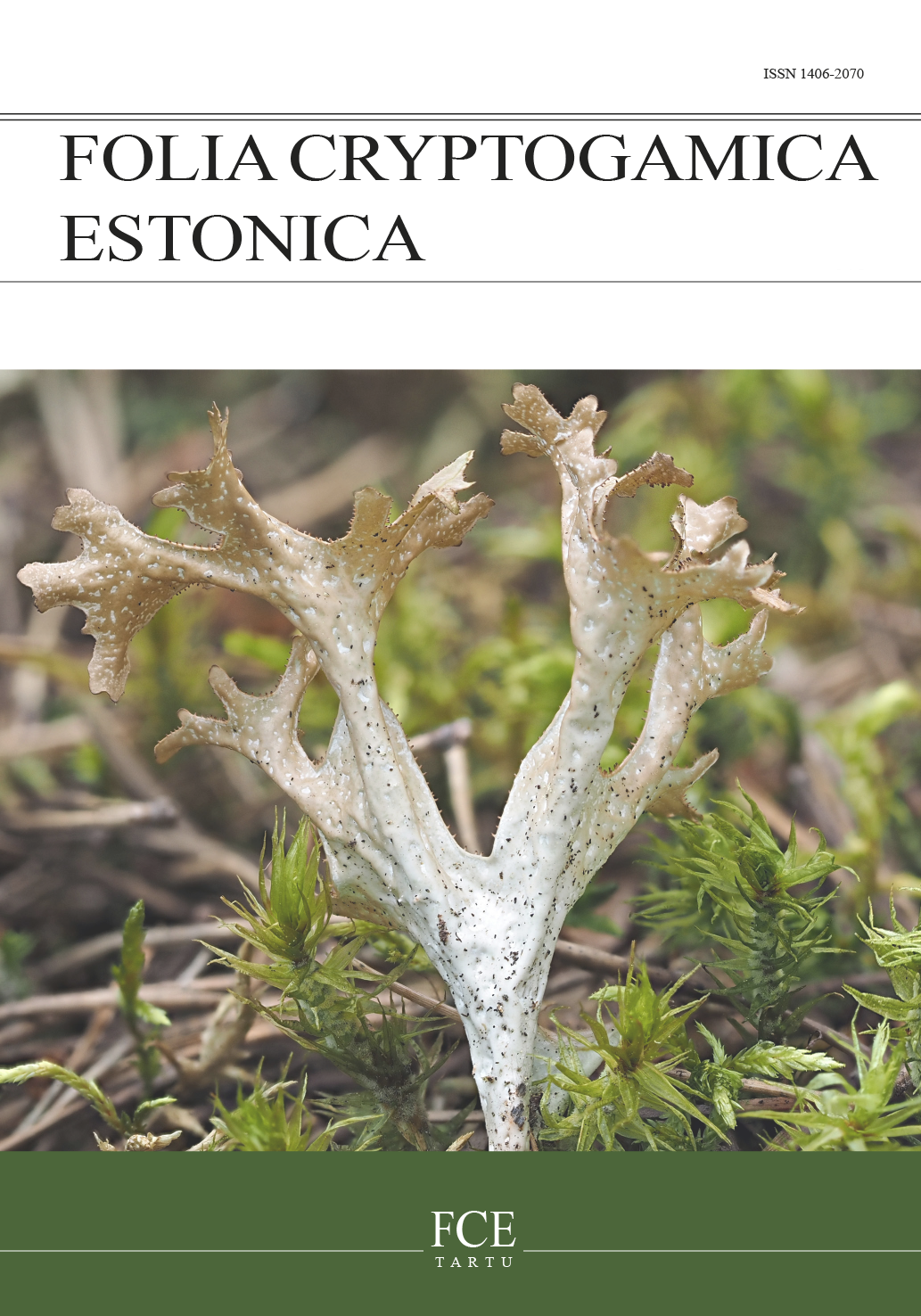The lichens of the northern shore of the Gulf of Finland in the limits of St. Petersburg, Russia – diversity on the edge of the megapolis
DOI:
https://doi.org/10.12697/fce.2020.57.11Keywords:
Isthmus karelicus, black alder communities, indicator species, protected areas, Caloplaca lucifuga, Gyalecta nigricans, Lecidea malmeana, Micarea czarnotae, Micarea soraliferaAbstract
We present a lichen checklist for the northern shore of the Gulf of Finland in the limits of St. Petersburg, Russia. This area has diverse lichen biota within the city limits, and has been comprehensively studied since 1893, which gives a good base for analysis of historical changes in lichen diversity. The documented lichen biota comprises 469 species (430 lichenized, 24 lichenicolous, 3 facultatively lichenicolous, and 12 non-lichenized saprobic fungi), of them 191 species are known from herbaria and literature for the period before 1991, and 436 species were recorded since 1991 to 2019. Thirty-three taxa were excluded from the lichen list of the study area as erroneous or dubious records. Altogether 48 species are new to St. Petersburg, including: Lecidea malmeana and Micarea czarnotae – new to Russia; Caloplaca lucifuga, Gyalecta nigricans, Micarea soralifera – new to European Russia; Agonimia flabelliformis, Endococcus verrucosus, Lecania turicensis, Micarea fallax, M. tomentosa, Xanthomendoza huculica – new to Northwestern European Russia; Lichenoconium lichenicola, Ramalina europaea, Sarcogyne hypophaea – not known also from the Leningrad Region. The studied lichen biota is moderately rich compared to other city territories. The history of economic development of the region has caused its serious transformation, degradation of natural habitats and therefore partial loss of lichen diversity. At the same time, human-made substrates and anthropogenic plant communities are inhabited by lichens, including species unknown in the natural habitats of the study area. However, 44 species recorded in the study area are red-listed in St. Petersburg, with 13 of them known only from historical collections. Forest communities, as well as historical parks, in NW part of St. Petersburg are important source of biodiversity on regional level nowadays and hopefully in future, and deserve protection.


